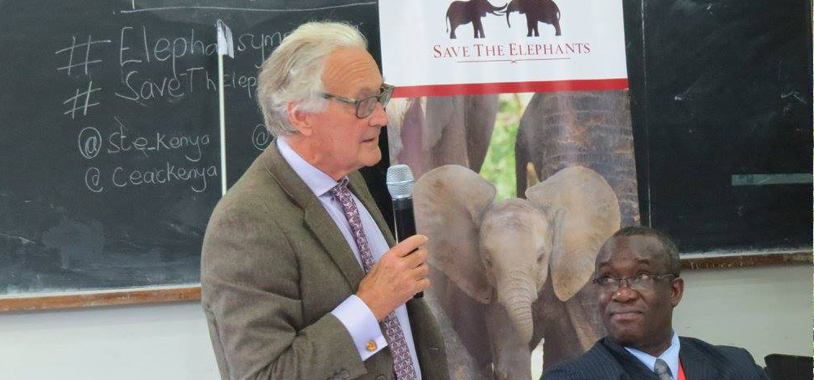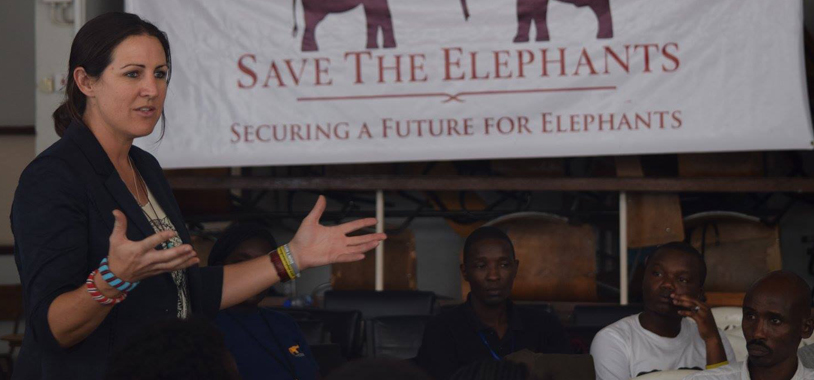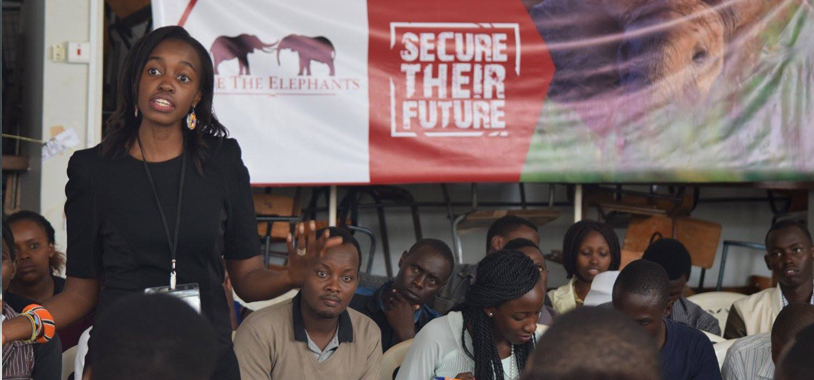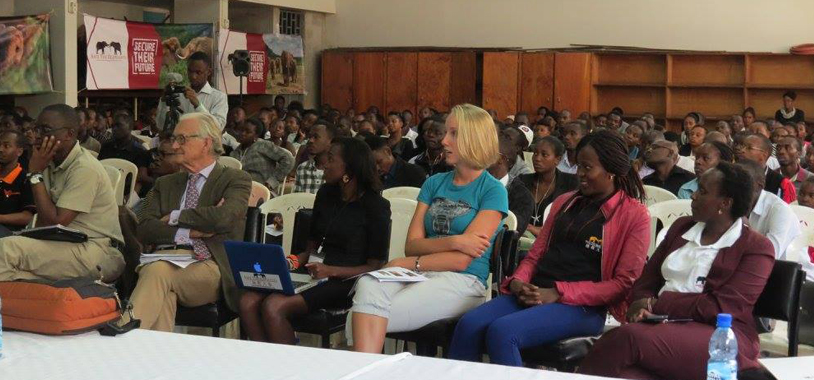On a chilly Friday morning in November, at 8am, students from six universities began to trickle in. You could see the anticipation on their faces as they collected their Save the Elephants notebooks and sat down for the first ever symposium on elephant conservation in Kenya.
Save the Elephants has for a long time noticed the growing disconnect between the education curriculum at higher levels in Kenya and what is required to contribute meaningfully to the work of conservation. Simply put, people studying in the field know about the crisis facing wildlife, but cannot contribute to fixing it. So above and beyond putting on an awareness raising event, STE offered an opportunity for local students studying zoology, wildlife, environmental science, GIS and other courses to learn from the experts about how conservation is done, what skills they need, what challenges are faced and how to navigate the conservation system.
As the room filled, the chief guests gave introductions to the event, beginning with a heartfelt speech by the University of Nairobi Director of the School of Biological Sciences, Dr. Gideon Nyamasyo. After the Principal spoke, it was Founder Iain Douglas-Hamilton’s turn. In seconds, he had everyone rapt with his encounters with elephants. He connected students to animals some had never met by showing how empathetic elephants were for non-relations, and by sharing his near death experience under the tusks of the famous elephant Diana.
The symposium was in full swing now, and after an introduction to STE by Resson Duff, Dr. Lucy King took the stage to speak both about STE’s Long Term Monitoring work in Samburu, and her use of low tech conservation innovation for her award-winning Elephants and Bees research project in Tsavo. Dr. Ben Okita was up next, inspiring students with his path to overcoming conservation and development challenges, complete with fascinating videos showing elephants navigating increasingly complex landscapes. The students expressed their burgeoning interest in both topics with a myriad of questions on both human wildlife conflict mitigation, and conservation planning in a changing Kenyan landscape.
After a sumptuous lunch, we were on the march to understanding the conservation job market, and how to put one’s best foot forward to get internships and jobs. After this session led by Resson Duff, David Kimanzi finished off the day with riveting information and advice on GIS, exposing students to how vast the world of GIS really is.
At the end of the day, the speakers expressed great catharsis, having passed on dos and don’ts of conservation to the right audience, while the students walked away full of new ideas, information and insights about their newly forged path to contributing to conservation. In short, the day was a roaring success!
We would like to thank the Chiromo Environment Awareness Club for their tireless work in helping STE organize the event, and all the speakers and students for attending and contributing. Read Michael’s blog on the symposium and what he learnt.







